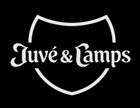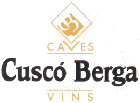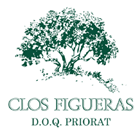Seminar: Castilla-La Mancha Wines
by
Kathy Sullivan
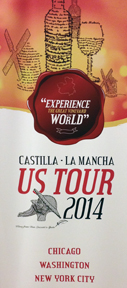 On February 25, 2014 wineries from Castilla-La Mancha presented a seminar and wine tasting in Washington, D,C, as part of their US TOUR 2014. The event was titled, "Experience the Great Vineyard in the World.".
On February 25, 2014 wineries from Castilla-La Mancha presented a seminar and wine tasting in Washington, D,C, as part of their US TOUR 2014. The event was titled, "Experience the Great Vineyard in the World.".
During the seminar we learned that the region celebrates the tale of Don Quixote. The large windmills in the area remind one of giants with arms moving about and in the story Don Quixote fights these “giants.” Symbolically Don Quixote fights against the things that are obstacles.
Maria Luisa Soriano, Minister of Agriculture for Castilla–La Mancha, spoke about raising the recognition of Castilla–La Mancha. She also spoke about the 430,000 hectares of vineyards and quality of the region’s wines. Organic vineyards cover 118,000 acres. With more than 400 wineries, one of the goals of the region is to increase exports to the United States.
Before tasting six of the Castilla-La Mancha wines at the seminar, Geralyn Brostrom, CWE, President of Vindeavour provided an overview of the region. The Castilla–La Mancha region is located south of the Castilian plateau and 36 miles south of Madrid. The land is at an elevation of 2,000 feet and higher. The soil is comprised of sand, gravel and is rocky as well as well drained. The vineyards are dry farmed as the region only averages 12 inches of rain each year. Historically organized viticulture has been traced to at least Roman times. At one time the Cistercian monks helped with the grape culture.
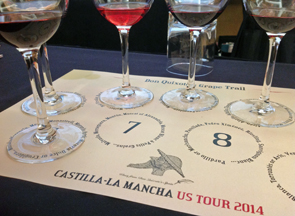 After the general discussion of the Castilla–La Mancha wine region we tasted six wines. While we tasted the wines, the winemakers and winery representatives described their wines. We began with a white wine.
After the general discussion of the Castilla–La Mancha wine region we tasted six wines. While we tasted the wines, the winemakers and winery representatives described their wines. We began with a white wine.
White Wine Verum 2010 produced by Bodegas Verum was a blend of Sauvignon Blanc and Gewürztraminer. This 12.5% alcohol wine was a light yellow with notes of citrus, tropical fruits and floral. The taste also had hints of bread. The finish was smooth with fruit yielding to fresh baked bread.
Vina Aljibes Rosad/Rosé from the Appellation Vino de la Tierra de Castilla was produced by Bodega Los Aljibes. Also 12.5% alcohol, this wine was made with 100 percent Syrah. The color was a light orange-red with a pink hue. The wine offered notes of raspberries and strawberries. The finish was fruity with a nice balance between acid and fruit.
Finca Fabian Tempranillo 2013 was an organic wine produced by Dominio de Punctum Organic & Biodinamic Wines. The appellation for this wine was Vino de La Tierra de Castilla. This 100 percent Tempranillo wine was ruby with a pink hue. The aroma had dark fruit notes specifically cherry. The taste also had dark fruit notes. The finish offered mild tannins and the fruit yielded to a touch of crispness on the aftertaste.
Another wine Vidal Del Saz Roble Tempranillo was also made with 100 percent Tempranillo. This wine was from the appellation of D.O. La Mancha. The “Roble” in the name means that the wine was in oak for three to four months. This 2010 wine had 13% alcohol. The color was a dark ruby with a light ruby rim. The aroma was of dark fruits and spice. The taste offered cherry, raspberry and oak hints. The finish had tannins with fruit and spice.
Finca Rio Negro was produced by Meraven S.L. – Finca Rio Negro. This 14% alcohol wine from 2010 was a blend of Tempranillo, Syrah, Merlot and Cabernet Sauvignon. The wine was in French and American oak for 12 months. The color of the wine was ruby with a dark pink hue. The aroma was of dark fruits with some minerality and the taste was of cherries. The finish was crisp with tannins. There were notes of fruit with some oak hints on the aftertaste. It was a bit more acidic than the others in the tasting flight.
Bodegas San Dionisio produced Mainetes Seleccion 2009. The wine from the D.O. Jumilla Appellation was a blend of Monastrell, Merlot and Syrah. The color was a dark ruby with a ruby rim. The aroma had mineral notes and the taste also had minerality with dark fruit. The finish had minerality that predominated and bolder tannins.
After the final tasting during the seminar, we walked over to an adjacent room for a walk around tables of approximately 25 wine producers from Castilla–La Mancha.
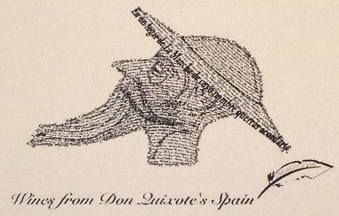 Nine Appellations of Origin in Castilla-La Mancha
Nine Appellations of Origin in Castilla-La Mancha
- D.O. La Mancha
- D.O. Valdepeñas
- D.O. Manchuela
- D.O. Almansa
- D.O. Jumilla
- D.O. Méntrida
- D.O. Mondéjar
- D.O. Uclés
- D.O. Ribera Del Júcar
- Vinos De La Tierra De Castilla
Please support the following.
 |
|||
 |
 |
